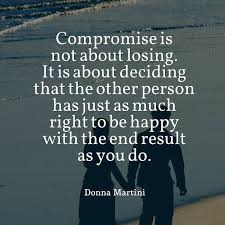We all have preferences and opinions about clutter. However, a healthy relationship is one built on understanding and compromise. The following are tips for finding that middle ground when it comes to organizing differences.
-
Timing is Everything.
There is usually one person in the relationship who organizes daily and the other -as needed. Instead of arguing about it, why not agree on a time to pick up and then make it fun. Put on some tunes and a timer and go around the house and race each other to put the items away. If time is an issue, then the daily organizer can put all the out-of-place items in a container, and the whenever organizer can put these away at the end of the week.
-
Common Areas vs My Areas.
If one person is very organized with their things but has difficulty organizing the common areas, then it may be as simple as labeling cabinets to make it easier to know where to put things away. Also involve each other in the system and ask for help with ideas. It could be that your way of doing things does not make sense to the other and you may learn a new creative way to organize an area that makes sense to you both.
-
Establish Clutter-Free Zones
If you like a tidy pretty home but your partner is unaffected by a cluttered space, then you may want to establish zones that remain clutter fee and zones where anything goes. If the space is small and the clutter free zones are few, then you may need to initiate the decluttering process. By enlisting the other’s help to decide what stays and what goes, then your partner doesn’t have to do the work. Getting rid of stuff can be overwhelming for some. If there’s emotions attached to the items, there may be a way to transform the items into mementos, like making a quilt out of favorite old t-shirts or digitizing meaningful paperwork.
-
Permission to Land.
Compromise on a daily temporary “catch-all zone,” whether it be the kitchen island, the desk or the dining room table. Allow the other party to dump all the day’s stuff on this area with the condition that these items be removed by dinner time-in the case of the dining room table, or by the end of the night for other areas. This will give you peace of mind that the area will be decluttered at the end of the day and you will both be able to avoid conflict or unnecessary angst.




Recent Comments